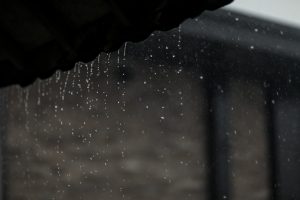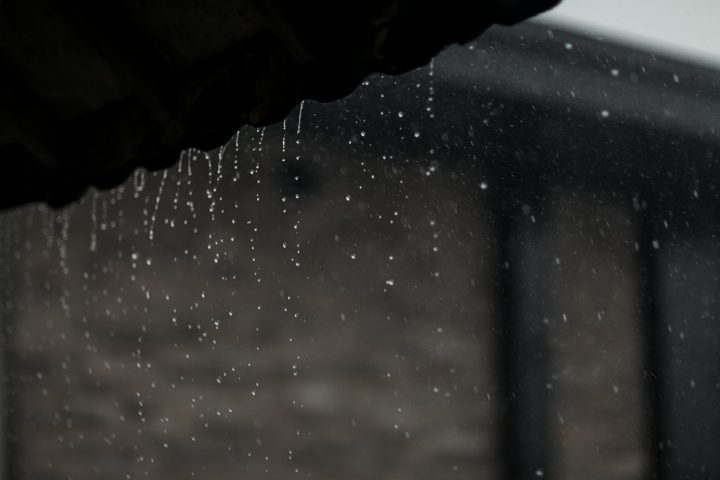
You can ignore every minor issue around your house for as long as you want, but when there’s roof damage, you can’t procrastinate. Many big or small things can happen to your roof, but the damage caused by weather conditions is among the most serious.
Rain and snow might not harm your roof to a great extent. However, severe storms can cause roof emergencies, and if you’re living in a stormy area, preparing for damage is a good idea. Let’s discuss some tips on emergency roof repairs after storm damage.
Don’t Panic
The first and most important thing you can do as a homeowner in a roof emergency is to stay calm and act instead of panicking. For significant damage, the faster you get help, the easier the repair process will be; It will also spare you future inconveniences.
Assess the Damage
Intense wind, fallen tree branches, snow buildup, and other inclement weather-related conditions can damage your roof. Check your roof to determine the damage. Early damage assessment helps establish necessary repairs and prevents further more expensive damage. Many contractors provide emergency roof repair if you need it.
Contact Your Insurance Provider & Contractor
Once you’ve determined what’s happened to your roof, call your insurance provider and contractor and explain the situation. Insurance companies typically have a limit when filing claims. It’s crucial to properly document roof damage and submit your claim as soon as possible. It may not help to call them during the storm, though. No contractor or insurance provider will send you help when rain, wind, or lightning conditions exist.
Protect Your Roof
Emergencies can vary, and before designing the plan of action, it’s important to understand the level of damage you’re facing. What kind of damage are we talking about? Different kinds of damage require different approaches. A tree may have fallen on your roof, or maybe the lightning was severe enough to cause damage. The situation will determine further action, but the essential first step is to quickly install a protective cover to protect your interior from damage.
Perform Roof Emergency First Aid
There are some things that you can do before professional help arrives. When the storm stops, and it’s safe to go outside, climb onto your roof, and, if possible, move around dislocated shingles to prevent leaks and protect your house.
If the damage is not too severe, you can cover the cracks with roofing cement or buy additional shingles and install them on the spots where they’re missing. You can use metal sheeting to cover the missing shingles as a temporary measure.
Replacing the whole roof takes time and financial resources that may not be immediately available. These repairs provide a temporary measure until you can replace your roof.
One Last Tip
It’s crucial to have up-to-date insurance. When your home is damaged, having adequate insurance pays off. Always keep the number of a roofing contractor on hand and contact them in case of emergencies.
What Kinds of Roof Damage Can Storms Cause?
Your roof is one of the greatest investments in your home. Unfortunately, turbulent weather conditions can cause significant roof damage, compromising its structural integrity. By learning about various types of damage, homeowners can take steps to prevent the damage from compounding over time. Below are the most common types of roof storm damage and what every homeowner should know about them.
Tree Damage
How much damage does a tree do to a house?
During a storm, weakened trees might collapse, causing damage to shingles and the general structure of your roof. The damage caused by fallen trees can be substantial, requiring an emergency roof repair or a complete roof replacement.
How can I protect my roof from trees?
If you have trees around your home, monitor their health and maintain them often. Consider completely removing weak or unhealthy trees to reduce their risk of falling over. Roofing experts also recommend trimming all tree branches within six feet of your roof, as low-hanging limbs can scratch and dislodge the shingles.
Is tree damage to my roof covered by insurance?
According to the Insurance Information Institute, a standard homeowners insurance policy covers tree damage to your property, whether it fell due to wind, lightning, or hail. Your insurance will likely help cover the cost of storm damage roof repair.
Wind Damage
How much wind can damage a roof?
When wind surpasses 55 miles per hour, your roof is more prone to wind damage. Wind can tear off shingles, bring along debris that can hit your roof, and uproot trees, causing structural damage to your property. Poor installation and compromised roof shingles can make your roofing more susceptible to wind damage.
What does a wind-damaged roof look like?
High winds may not hit your roofing system uniformly. Instead, it can cause damage on the edges of your roof or in weak areas with loose shingles. Wind roof damage typically includes the following:
- Missing Shingle Granules: Shingle granules provide weather protection. Winds can cause granule loss. This shortens your shingles. Check your gutter for granules, as this is where they usually pile up.
- Curled or Lifted Shingles: Curled or raised shingles at stress spots (corners, edges, and near the chimney) indicate wind damage to your roof. If you suspect your roof has wind damage, contact a roofing specialist for an inspection.
- Damaged Flashing: Your roof’s flashing plays a key role in reducing the risk of water damage to your roofing. The chimney flashing is particularly vulnerable, as it can lift up when the wind hits your chimney. After a storm, inspect your flashing for signs of damage.
- Water Damage: If wind damages your roof, it could lead to water intrusion that damages your home’s interior. Discoloration, flaking paint, and moist spots are common signs of leaks. When you detect symptoms of wind damage, call a contractor to prevent further damage.
Lightning Damage
What happens if lightning hits my roof?
Lightning can severely damage your roof by penetrating shingles, tearing gutters, damaging your attic, or collapsing your roof. Lightning may even dislodge chimney bricks and other roof components. When lightning strikes near electrical wires, fires can start.
If a lightning bolt damages your roof, you must act quickly. Contact a reliable roofing contractor for an emergency roof repair and a thorough damage inspection.
How do you know if lightning strikes your roof?
If you’re in your home when a strike occurs, you’ll hear an explosive sound and notice a flash. If lightning damages your roof, you might see obvious physical damage, like holes, loose bricks, or cracked shingles. A power outage may occur, and you may smell smoke or melting plastic.
What can you do to prevent lightning damage on the roof?
Consider investing in a roof lightning protection system with a rod that diverts the lightning bolt away from your home and into the ground. If you have wood shingles, opt to replace them with Class A fire-resistant asphalt or fiberglass shingles.
Contact Us for Emergency Roof Repair
If your California property has suffered roof storm damage, don’t spend precious time browsing the internet looking for an emergency roof repair near you. Homeowners across Los Angeles, Long Beach, Pasadena, Burbank, and surrounding areas rely on the experts at Roof Repair Specialist. They know they’ll receive prompt, high-quality, dependable emergency roof repair.
Our team will thoroughly evaluate your roof to determine the necessary repairs. We’ll provide a material and workmanship warranty to ensure your peace of mind no matter the season.





